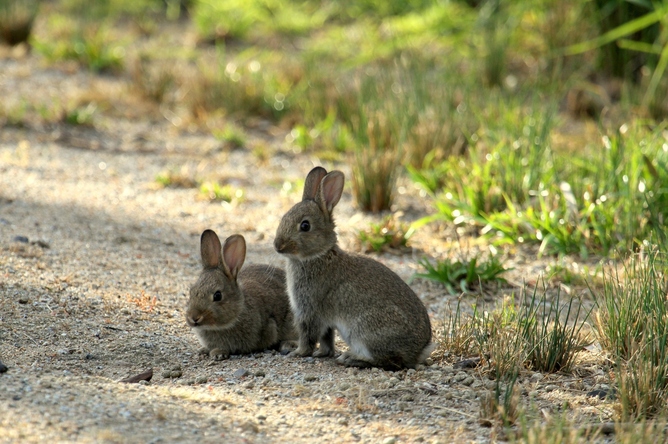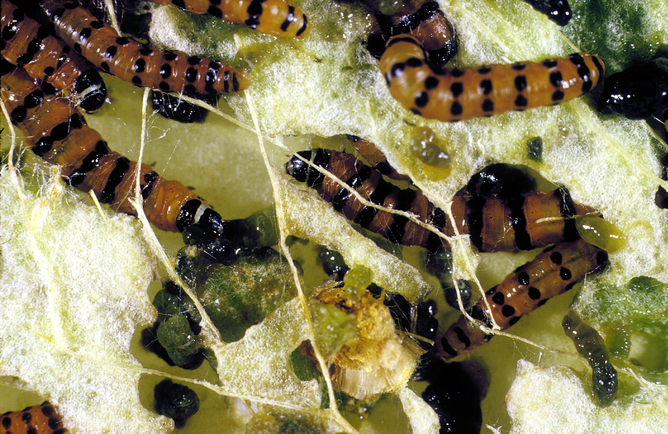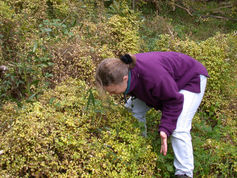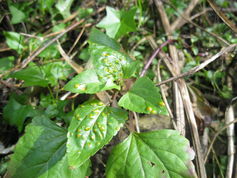Rabbit numbers have been considerably reduced by the introduction of two viruses - Rabbit calicivirus and myxoma.
Rabbit numbers have been considerably reduced by the introduction of two viruses – Rabbit calicivirus and myxoma
By Louise Morin, CSIRO; Andy Sheppard, CSIRO; Tanja Strive, CSIRO.
Australia’s “ferals” — invasive alien plants, pests and diseases — are the largest bioeconomic threats to Australian agriculture. They also harm our natural ecosystems and biodiversity. Some, such as mosquitoes, also act as carriers of human diseases.
These invasive species cost Australian agriculture more than A$10 billion a year — more or less what states and territories spend on roads every year.
One method of controlling invasive plants and pests — known as biological control, or “biocontrol”— is to use their own enemies against them. These “biocontrol agents” can be bacteria, fungi, viruses, or parasitic or predatory organisms, such as insects.
To find biocontrol agents, we travel to the native home of invasive species and search for suitable natural enemies. After extensive safety testing, they are introduced into Australia.
But do they work?
Learning from the cane toad catastrophe
Cane toads, which were introduced in 1935 to control cane beetles in Queensland’s sugar cane crops, are probably the most infamous example of biocontrol going wrong in Australia.
But Australia’s borders were more open back then. To protect against such harmful mistakes, Australia now has world-leading biosecurity import regulations and an effective quarantine system.
To be allowed entry into Australia, a candidate biocontrol agent must be assessed using internationally-recognised protocols. This demonstrates that it will not pose unacceptable risks to domestic, agricultural, and native species.
A cost-effective solution
Other control methods, such as the use of poisons and mechanical removal, require continued reapplication. Many biocontrol agents of plants and insects, once established, are self-sustaining and don’t have to be reapplied.
Prickly pear is a perfect success story of biocontrol. The plant was introduced into Australia in the late 1770s and grown in a few areas of NSW and Queensland until it became invasive after rapidly spreading following the flood of 1893. Biocontrol was initiated in the early 1900s and the prickly pear moth, Cactoblastis cactorum, was introduced in 1926 from the pear’s native home in the Americas. Cactoblastis has been keeping prickly pear under control almost by itself to this day.
Larvae of Cactoblastis cactorum feeding upon prickley pear fruit.
Photo: CSIRO Entomology
Cactoblastis moth larvae eating prickly pear
Since then, many more biocontrol agents have been introduced to control invasive plants. These include mimosa in our top end, bridal creeper in southern Australia, parthenium in Queensland and ragwort in Tasmania.
A series of cost-benefit analyses in 2006 revealed that for every dollar spent on biocontrol of invasive plants, agricultural industries and society benefited by A$23. This was due to increases in production, multi-billion dollar savings in control costs and benefits to human health.
Biocontrol has also proven to be the only effective way to significantly reduce European rabbits across Australia. Myxoma virus was released in 1950, followed by rabbit calicivirus in 1995, causing regular disease outbreaks in wild rabbits. Together, they have kept rabbit numbers well below the devastating pre-1950s levels.
It’s estimated that the benefit of rabbit biocontrol to agriculture is worth more than A$70 billion. This is the only example of a successful large-scale biocontrol program against a vertebrate pest anywhere in the world.
The invasive plant bridal creeper affected by its rust fungus
The invasive plant bridal creeper affected by its rust fungus
The initial costs of biocontrol programs are generally high. That’s because we have to find suitable candidate agents overseas, test them for safety in quarantine, and comply with regulations around release.
But once biocontrol agents are released and affect the invasive species across its range, follow up control costs are greatly reduced.
Biocontrol is not a ‘silver bullet’
Biocontrol will not solve all problems to do with invasive species.
Weather and climate can affect biocontrol agents, like all living organisms. These two factors can slow and even stop the agents building-up to sufficient levels to control the invasive species.
In the case of the two rabbit viruses, virus-host co-evolution has led to a decline in effectiveness of the viruses over time as they lost virulence and rabbits developed resistance to them. This is similar to how bacteria can develop resistance to antibiotics. As a result, we must continue to search for ways to counteract these effects.
Like a multi-drug cocktail, biocontrol agents must often be used together to knock out an invasive species. And while biocontrol rarely completely eradicates an invasive species on its own, it may control it enough to be able to use other methods at a lower cost.
Crofton weed has overtaken hillsides of Lord Howe Island, but a new fungal disease will help control it.
Crofton weed has overtaken hillsides of Lord Howe Island, but a new fungal disease will help control it.
And just because we use biocontrol, it doesn’t mean we don’t need good farm practices and land management, such as bush restoration, to ensure the recovery of ecosystems affected by invasive species.
Biocontrol is unlikely to be the solution where invasive species are very closely related to species that we value — cats, for instance. Feral cats have recently been in the media as the greatest threat to Australia’s mammals. But because they are the same species as the cherished family moggy, a biocontrol program would be highly controversial.
New biocontrol programs
The historic successes of biocontrol in Australia justify continued investment. For widespread invasive species, there are no alternatives as cost-effective that work across the vast landscapes where feral species roam.
For example, the European carp pest makes up 90% of the fish biomass in the Murray Darling river system. The most promising option being developed for large-scale control is the carp-specific koi-herpes virus that is in the final stages of testing (to make sure the virus only targets carp). Its proposed release in Australia will soon be open for public debate.
CSIRO has been testing in quarantine a new virus to control invasive carp. CSIRO
CSIRO has been testing in quarantine a new virus to control invasive carp.
Another case is the recent release of a rust fungus from Mexico for the biocontrol of crofton weed in eastern Australia. This invasive plant smothers grazing systems and natural ecosystems, including on the hillsides of Lord Howe Island, a World Heritage Area. The expectation is that this new highly-specific rust fungus will significantly contribute to control of this plant, the way other rust fungi have successfully done in the past against other invasive plants.
After 100 years of history in Australia, biocontrol should continue to have a bright future given it is the only approach that is environmentally-friendly, cheap and effective.
This article was originally published on The Conversation.







11th October 2014 at 5:44 am
Is it a correct assumption that bio-control of cane toads not urgent because they’re not a threat to economy, and only destroying amazing but worthless nature?
13th October 2014 at 5:44 pm
Biological control of cane toads was the basis of a major research program in CSIRO from 2004-2008, but was unsuccessful in finding an effective method of control. There has been no appetite for further work due to an independent review of the research concluded that biological control was unlikely to work. Cane toads also have a lung worm they brought with them that slows them down once they are established in an area for a while. Also the science suggests that once cane toads have been around a while their impacts on the few native species they directly affect declines to pre-invasion levels.
8th October 2014 at 2:44 am
India minahs birds .?